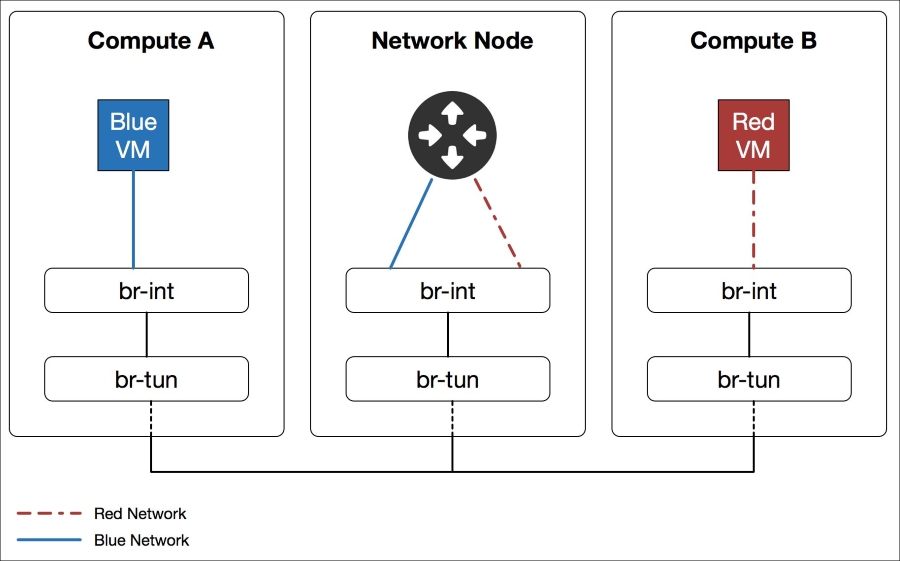Distributing routers across the cloud
Much like nova-network does with its multi-host functionality, Neutron can distribute a virtual router across compute nodes in an effort to isolate the failure domain to a particular compute node rather than a traditional network node. By eliminating a centralized layer 3 agent, the routing that was performed on a single node is now handled by the compute nodes themselves.
Legacy routing using a centralized network node resembles the following diagram:

Figure 9.1
In the legacy model, traffic from the blue virtual machine to the red virtual machine on a different network would traverse a centralized network node hosting the router. If the node hosting the router were to fail, traffic between the instances and external networks, or the instances themselves, would be dropped.
In this chapter, I will discuss the following:
Installing and configuring additional L3 agents
Demonstrating the creation and management of a distributed virtual router
Routing between networks...
























































